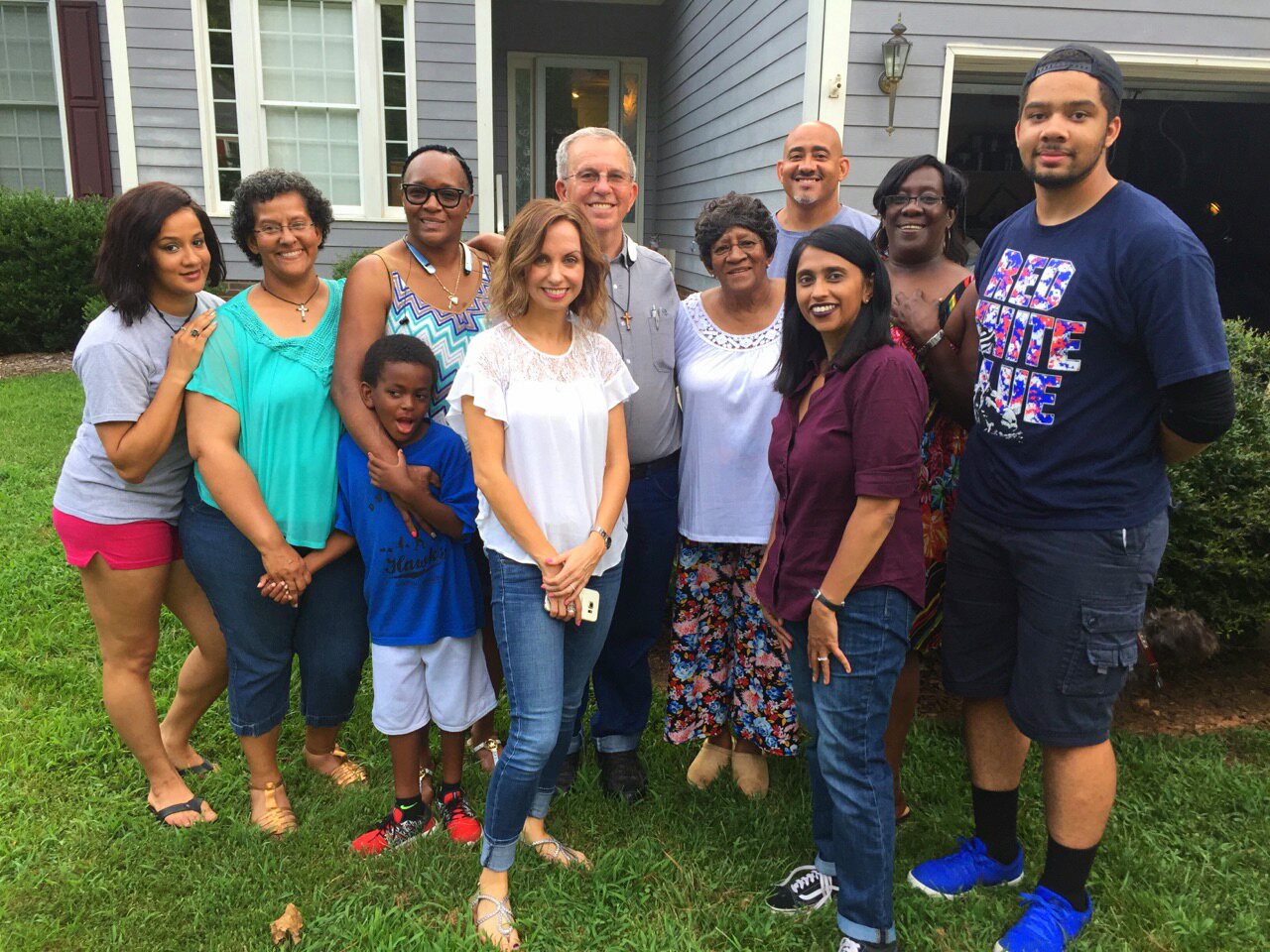‘MIXED’ Values: Biraciality in Non-Post-Racial AmericaPosted in Articles, Communications/Media Studies, Media Archive, United States on 2016-10-08 02:26Z by Steven |
‘MIXED’ Values: Biraciality in Non-Post-Racial America
Documentary Magazine
International Documentary Association
2016-09-23
Caty Borum Chattoo, Co-Director
Center for Media & Social Impact, Washington, D.C.
 Filmmakers Caty Borum Chattoo (front left) and Leena Jayaswal (front right) with the first mixed-race couple in North Carolina after the Loving v. Virginia decision. |
The comments—and the fetishizing perspectives—were naively unexpected: “What is he?” “Where is she from?” “Are they adopted?” “So exotic.”
These are just a few of the remarks I’ve experienced in my decade-long journey as a white mother who gave birth to two brown children—alternatively called biracial, mixed, mulatto, swirls, black, depending on the perspective and region of the country. The aesthetic input is fairly innocent. But other moments have teeth: white parents and teachers who confuse my brown daughter with the one other girl of color in the ballet class; endless discussions about how I am ill-equipped to care for my daughter’s beautiful biracial curls; and a pattern of events with my then-third-grade son that was impossible for me to understand until I finally picked up a book about unconscious bias that can plague boys of color in school.
Others have shared a full spectrum of unsolicited, strongly held opinions about how my children should identify themselves racially, and how I, their white mother, should impose identities for them: The one-drop rule means they’re black, or they don’t look black enough, or being mixed implies that they will be racially self-hating, confused or the opposite of “pure.” These micro-aggressions—actually not micro at all—have also blended with a steady stream of other moments that can be best explained as overt racism. Still, for the most part, life is good and still innocent for them…
…We hope MIXED will offer a new lens into race and the lives of the first generation of mixed-race kids and families to be counted in the US Census, which has only been possible for 16 years. And the backdrop of today has turned out to be particularly meaningful: In an era in which biracial children are trying to understand both racism and white privilege, how do we explain the socio-political construction of race to a child who identifies as more than one? So, what have we—a brown woman and a white woman working together on a film about race—learned so far along the way, in places like New York and Texas and North Carolina and Maryland and Virginia, against the backdrop of Ferguson and #BlackLivesMatter and the historic Obama presidency?…
Read the entire article here.


